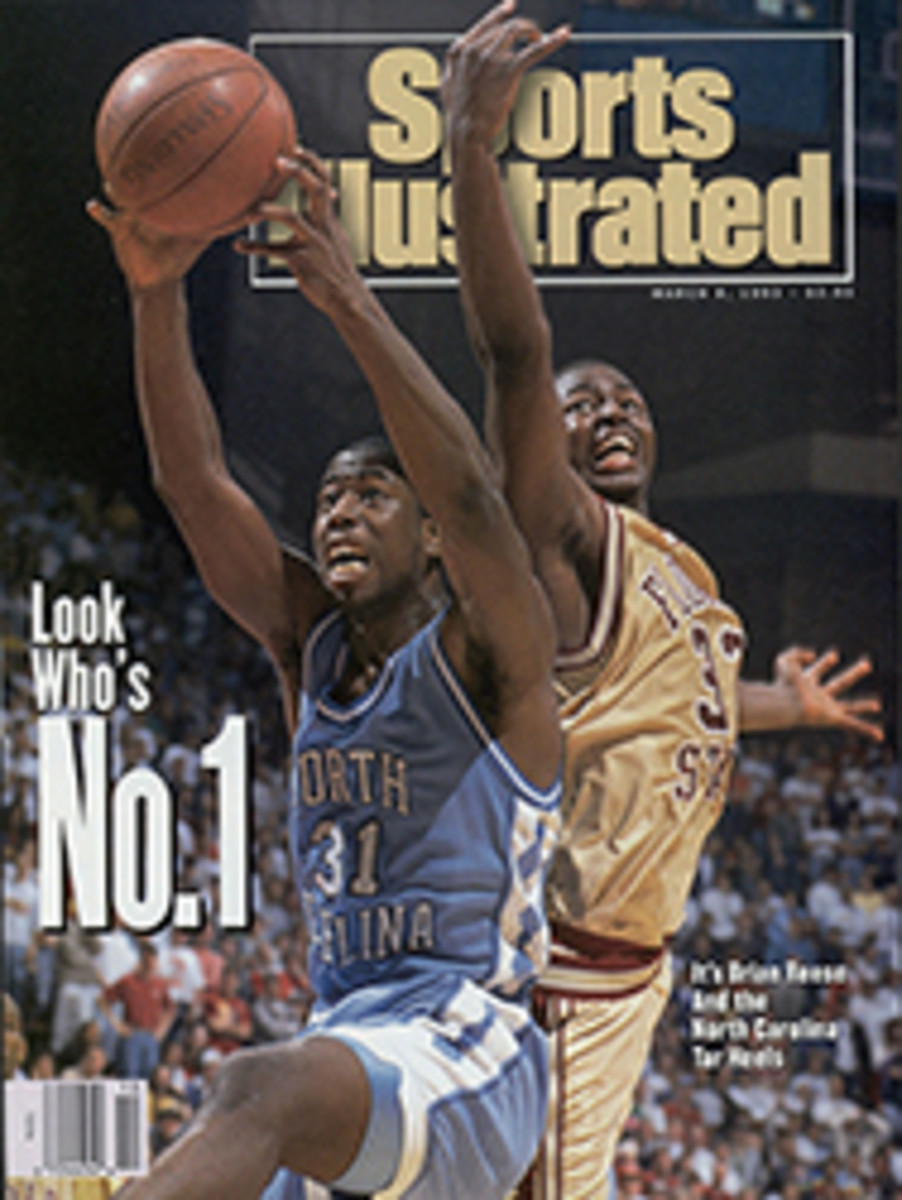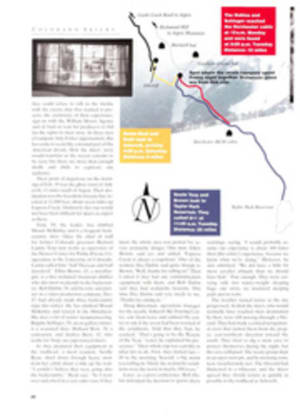
SCORECARD
In the Bucks
In the next few weeks 298 NFL players will try to cash in on the league's new free-agency arrangement, some by signing guaranteed contracts for more generous sums with their current teams, others by extracting sweet deals from rival teams. Furthermore, hundreds of players, past and present, will soon be divvying up the $265 million that the NFL is obligated to pay to settle a dozen lawsuits that players brought against the league. The first 44 recipients of this loot have been identified; as plaintiffs in nine of the suits, they will share some $19 million.
The amount allotted to each of the 44, who were named in an appendix to a preliminary labor settlement approved last week by U.S. district court judge David Doty in Minneapolis, was determined by how big a role that player had in the lawsuits. The 44 included such well-known players as Los Angeles Raider running back Marcus Allen (who will receive $1,876,000), Green Bay Packer quarterback Don Majkowski ($1,366,000) and Cleveland Brown defensive back Frank Minnifield ($1,275,000). Another big winner, San Diego Charger guard Dave Richards, will collect $1,440,000 for his all-pro performance as a witnesss in the antitrust suit in Doty's court that struck down the NFL's Plan B free-agency scheme. The biggest sum, $3,206,000, will go to New Orleans Saint quarterback Bobby Hebert, who sat out the 1990 season in a contract dispute and twice challenged the NFL in court on the free-agency issue. Hebert didn't complete a pass in '90, but that turns out to have been a pretty good year for him all the same.
Smoke Screen
After Boston Celtic center Robert Parish admitted in court in Waltham, Mass., last week that he had been in possession of marijuana, he was placed on unsupervised probation for six months by Judge Paul Cavanaugh, who told the 39-year-old Parish that as a star athlete he had "an extra burden of great fame and notoriety." While Parish's scrape with the law was no laughing matter, his apologists noted that marijuana has not caused nearly the grief to athletes, or to society generally, that cocaine, heroin or alcohol have, and some of them showed up at the courthouse to march for the legalization of pot. One of their signs read INHALE TO THE CHIEF.
Two of a Kind
On Cincinnati's all-sports radio station, WSAI, Art Schlichter's three-hour afternoon talk show is followed by Pete Rose's two-hour show. This programming parley is known locally as the "daily double."
Responsibilities
Even as Cal alumnus Ron Fimrite was musing on the subject (page 66), the Bears' defrocked basketball coach, Lou Campanelli, called SI last week to take issue with a SCORECARD item (Feb. 22) that excoriated Campanelli and other coaches who verbally abuse their players. Campanelli disputed our statement that after a game he had "turned over a table at a team dinner." What Campanelli says he actually did was sweep some box lunches off a table before a postgame snack.
SI has spoken with four other witnesses to the incident, which occurred in a locker room at New Jersey's Meadowlands following a Cal loss to James Madison on Dec. 29. One witness said that Campanelli turned over a table; the other three said he didn't but that he kicked various objects, including a table—and the box lunches. Estimates of the number of box lunches trashed by Campanelli ranged from "maybe four or five" (Campanelli's figures) to more than 20. All agreed that Campanelli raged at his players. "I'm not saying I didn't get angry," Campanelli told SI. "That's what happens in locker rooms. Towels get thrown, chalk gets thrown, water bottles get knocked over, a lot of things go flying around. Saying it was a team dinner makes it sound like it happened in a hotel or restaurant. What goes on in a locker room is different. It's family. It's private."
But should it be? One university president, Wake Forest's Thomas Hearn, argued in The Washington Post last week that coaches' locker-room comments should be considered public because the coaches "are speaking to young people in an official university-sanctioned capacity." Hearn also told the newspaper, "I am having a group of students at my home tonight. If I were to abuse them verbally or if I were to humiliate them or call them names, I would be summarily fired—and I should be, because I have a responsibility to them and to the university community.... I think that coaches have that same responsibility."
Destiny's Darlings
Political settlements reached last week have apparently cleared the way for new sports facilities in Atlanta and Boston. In Atlanta, officials negotiated a lease for a $207 million stadium that would be the centerpiece of the 1996 Summer Olympics and, after reconfiguration from 85,000 to 45,000 seats, would be home to the Braves starting in 1997. In Boston, the Massachusetts legislature passed a bill involving air rights and easements to allow construction of a $160 million, 18,500-seat Boston Garden as home for the Celtics and the Bruins beginning in 1995-96.
In both cases politicians made financial concessions—to the Braves in Atlanta and to Delaware North, the owner of the Bruins and developer of the new Garden, in Boston. Those pushing the buildings used scare tactics, warning that if the facilities didn't get the go-ahead, the teams involved would move elsewhere. In Boston it was said that failure to provide a new Garden would reduce the home of Harvard, MIT, Faneuil Hall, John Hancock Co., Boston Common, the Museum of Fine Arts and Old North Church to the status of a second-class city. Though that seemed overblown, the fact is that the current Garden, owned by Delaware North, is a 65-year-old, rat-infested relic. Indeed, Boston is woefully short of first-rate sports facilities, and convention and concert space. Under the circumstances it was conceivable that one or both of the Garden's teams would indeed have left if the new building hadn't been approved.
More questionable was Atlanta mayor Maynard Jackson's claim that a new stadium was vital to "our city's destiny." Atlanta has plenty of modern sports facilities, even for the Olympics, including the Georgia Dome and the Omni, and the Braves' present home, 28-year-old Atlanta-Fulton County Stadium, is still serviceable. What's more, some critics charge that the stadium deal is far too favorable to the Braves. One of them, Tom Lowe, a member of the Atlanta-Fulton County Recreation Authority, says, "I see us leaving a legacy awash with debt, red ink and disaster that will last until my grandchildren have grandchildren. That's a long time, folks."
Such Souvenirs
Want more evidence that this sports-collectible thing has gotten out of hand? After apparently scoring his 50th goal of the season against the Winnipeg Jets last Friday night, Vancouver Canuck star Pavel Bure retrieved the puck as a memento of his achievement and went to the bench, only to have the referee disallow the goal. In disgust Bure threw the puck onto the ice. This time a Winnipeg player retrieved it. The Jets were savvy enough to know that collectors find value in the most trifling souvenirs—maybe even a puck from a 50th goal that wasn't.
A Fighter of Global Dimensions
Two-ton Tony Galento didn't really weigh 4,000 pounds; for the 1939 heavyweight championship fight in which he was KO'd by Joe Louis, he tipped the scales at a mere 233¾. In fact, Galento was a peewee compared to Robert (Iron Head) Smith (above), a 27-year-old heavyweight who has a pretty fair jab and is surprisingly light on his feet for a fellow who carries 344 pounds on his 6'1½" frame. Alas, Smith comes up short in the stamina department, as evidenced most recently during a split-decision loss in Philadelphia on Feb. 21 to 214-pound Jeremy Williams, a 20-year-old prospect who's being groomed for big things by Mike Tyson's onetime handlers, Bill Cayton and Kevin Rooney. Smith huffed and puffed his way through the six-rounder. In the fifth round, he was hit by Williams below the belt and writhed in what may have been exaggerated agony—at least referee Frank Cappuccino wasn't buying—in an effort to steal a breather. In describing the low blow, ESPN announcer Barry Tompkins proved quick on his feet too. "That's not south of the border," Tompkins said. "That's south of the equator."
PHOTO
CHUCK SEMINARY
PHOTO
KRIEG: BUCKMASTERS WHITETAIL MAGAZINE
PHOTO
O'NEAL: MANNY MILLAN
Chop Chop
At the Buckmaster National Deer Classic held annually in Lowndesboro, Ala., sports celebrities compete with ordinary folk in such outdoorsmen competitions as rifle and pistol shooting, knife throwing and bow-and-arrow golf. Another of the festival's events is the tomahawk throw, which was won this year by Dave Krieg (above), quarterback of the Kansas City Chiefs. Last year's winner? Catcher Greg Olson of the Atlanta Braves.
They Wrote It
•Edwin Pope in the Miami Herald: "I wouldn't believe some pro sports owners even if they swore they were lying."
TALL TALE
Recommended reading: a new book, Manute, by SI's Leigh Montville, recounting the story of Manute Bol, a 7'7" Dinka tribesman from the Sudan who makes it to the NBA. It's a full-length biography.
Shaq Said It
•Shaquille O'Neal (below), Orlando Magic rookie star, on
1) his press clippings: "I don't read the stories about myself. I just look at the pictures";
2) his big smile: "I have three versions—the million-dollar smile, the $2 million and the $3 million";
3) his game plan for life in the NBA: "I'm just going to keep it simple, use common sense, don't party too much, stay away from stray women, don't say yes to anything and don't sign anything, and I'll be all right."

